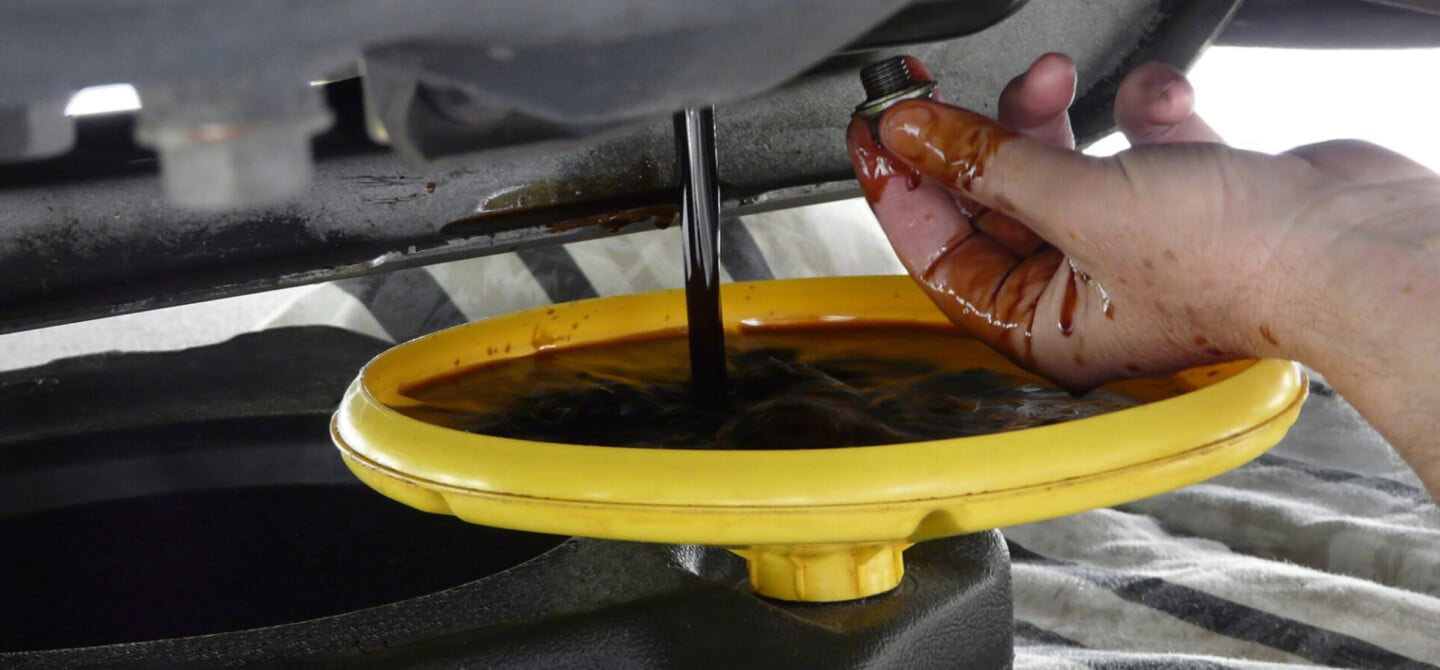It is better to change the engine oil when it is warm rather than cold. Warm oil is less viscous and flows better, allowing more of the old oil to drain.
This helps in removing contaminants and prevents them from sticking to the engine parts. When it comes to maintaining the health of your vehicle, regular oil changes are crucial. However, the question of whether to change the engine oil when it’s hot or cold often arises.
The general recommendation is to change the oil when the engine is warm. This allows the oil to flow more easily, aiding in the removal of contaminants and preventing them from clinging to engine components. Additionally, warm oil is less viscous, facilitating better drainage of the old oil. Understanding the ideal conditions for an oil change can contribute to the overall well-being and longevity of your vehicle.
The Great Debate: Hot Or Cold Oil Changes
When it comes to changing engine oil, the debate of whether to do it hot or cold is a hot topic among car enthusiasts and mechanics alike. Changing the oil when the engine is hot has its advantages and disadvantages. On one hand, the hot oil flows more easily and carries away more contaminants, but on the other hand, it poses a risk of burns and requires extra caution. Conversely, changing the oil when the engine is cold reduces the risk of burns, but the oil is thicker and may not drain as effectively. It’s essential to weigh the pros and cons of each method to determine which approach suits your specific needs.
Understanding Oil Viscosity
The temperature of the engine affects the viscosity of the oil. Cold oil has higher viscosity, making it thicker and more resistant to flow, while hot oil has lower viscosity and flows more easily. When changing engine oil, it’s important to consider the viscosity for optimal flow and lubrication. The right viscosity ensures that the oil can properly lubricate the engine components. It’s recommended to follow the manufacturer’s guidelines for the correct oil change procedure.
Safety Measures For Diy Enthusiasts
When it comes to changing engine oil, whether it should be done hot or cold is a common question among DIY enthusiasts. While changing oil when the engine is hot can have its benefits, it is important to take certain precautions. Firstly, always turn off the engine and let it cool down for a while before attempting to change the oil. This will prevent any accidental burns or injuries. Additionally, make sure to wear protective gloves and eyewear to protect yourself from any potential oil spills or splashes.
On the other hand, changing oil when the engine is cold also requires some precautions. It is important to level the vehicle properly before starting the oil change process. This will ensure accurate measurement of the oil level. Moreover, always check the viscosity of the hot oil before adding cold oil to it. Mixing oils with different viscosities can affect the engine’s performance.
In conclusion, whether you choose to change the engine oil hot or cold, taking safety measures is crucial. By following these precautions, you can ensure a smooth and safe oil change process.

Credit: www.paulsautorepair.com
Expert Recommendations
When it comes to changing engine oil, there is a debate on whether it should be done hot or cold. Industry standards and expert recommendations vary on this topic.
Mechanics generally advise changing the oil when the engine is warm, as warm oil is less viscous and flows better. This allows for easier draining of the old oil, ensuring less residue remains inside the engine. Additionally, warm oil is more effective at picking up contaminants and suspending them, resulting in a cleaner engine.
However, there are differing opinions on this matter. Some argue that changing the oil when the engine is cold can prevent accidental burns and reduce the risk of hot oil splattering. It is important to note that changing the oil when the engine is hot can be dangerous and should be avoided.
In conclusion, while warm oil is generally recommended for an oil change, it is essential to follow the manufacturer’s guidelines and consult with a trusted mechanic to determine the optimal conditions for your specific vehicle.
The Impact Of Oil Temperature On Engine Health
Changing engine oil hot or cold can significantly impact engine health. When changing oil cold, the old oil remains inside the engine, while warming up the oil makes it less viscous and allows it to flow better, reducing the likelihood of oil residue sticking to engine parts.
This can also help the oil to pick up more contaminants and hold them in suspension.
| Benefits of Removing More Contaminants | Risks of Changing Oil at Incorrect Temperatures |
|---|---|
| Changing engine oil when it is warm is recommended by experts as it allows the oil to flow easily, picking up more contaminants and holding them in suspension. This results in a cleaner engine with less old oil stuck to the walls of the oil pan and other engine parts, providing better lubrication and reducing the risk of engine damage. | Changing engine oil at incorrect temperatures, either too hot or too cold, can lead to various risks. If the oil is too hot, it can cause severe burns, and if it is too cold, it may not drain properly, leaving some old oil behind. Additionally, changing oil in a hot engine may cause it to expand, leading to inaccurate oil level readings and possible damage to seals and gaskets. Therefore, it is essential to know the correct temperature range for changing oil and follow it diligently. |

Credit: www.dieselarmy.com
Practical Tips For Effective Oil Changes
When it comes to changing engine oil, the question of whether to do it hot or cold is a common one. The best practice for hot oil changes is to let the engine run for a few minutes to warm up the oil. This makes the oil less viscous and helps it flow better, allowing more of the old oil to be removed from the engine. For cold oil changes, it is best to let the engine cool down for a few hours before changing the oil. This ensures that the oil has settled to the bottom of the engine, making it easier to drain.
Additionally, always turn off the engine and level the vehicle before checking or changing the oil. It is also important to be vigilant of the oil mark on the dipstick and to use the recommended viscosity of oil for your vehicle. Avoid adding cold oil to a hot engine during a service, as this can cause thermal shock and damage to the engine.
Overall, whether to change the oil hot or cold is a matter of personal preference and convenience, as both methods can effectively remove old oil from the engine. However, it is important to follow best practices and be mindful of potential risks to avoid damaging the engine.
Myths And Misconceptions Debunked
When it comes to changing engine oil, there’s a common misconception about whether to do it when the engine is hot or cold. It’s best to change the oil when the engine is warm, as warm oil flows more easily, allowing for a more effective and thorough oil change.
This helps to prevent old oil from sticking to engine parts and ensures that contaminants are effectively removed.
| Myths and Misconceptions Debunked |
|---|
|

Credit: www.dieselarmy.com
Concluding Thoughts: Making The Right Choice
When it comes to changing engine oil, there is an ongoing debate about whether it is better to do it hot or cold. While some argue that warming up the engine allows the oil to flow more easily and prevents engine damage, others believe that changing the oil when it is cold is the best condition. However, there is no definitive answer to this debate.
Summarizing the debate, changing engine oil when it is hot ensures that less old oil remains inside the engine and that recently circulated oil picks up more contaminants. On the other hand, changing the oil when it is cold may offer better conditions for an oil change. It is generally recommended to let the engine cool before adding oil, but it is not necessary to warm up the engine before an oil change.
In conclusion, the choice of whether to change engine oil hot or cold depends on personal preference and the specific circumstances. It is important to consult the manufacturer’s recommendations and follow proper procedures for a successful oil change.
Final recommendations for car owners include being vigilant of the oil mark on the dipstick, allowing the engine to cool before adding oil, and following the manufacturer’s guidelines for oil change intervals. Regular maintenance and proper oil change procedures are essential for the longevity and performance of the engine.
Read More: Can You Change Engine Oil Yourself?
Frequently Asked Questions
Is It Better To Change Oil Cold Or Hot?
When it comes to changing engine oil, it is better to do it when the engine is warm. Warming up the oil makes it less viscous and allows it to flow better, ensuring that less old oil remains inside the engine.
This also helps the recently circulated oil to pick up more contaminants and hold them in suspension. Changing oil in warm conditions is considered the best practice.
Do I Need To Let Engine Cool Before Changing Oil?
It is generally recommended to warm up the engine before changing the oil as warm oil flows more easily and can help prevent engine damage. However, you should not change the oil when the engine is red-hot as it can be dangerous.
Let it cool for at least half an hour before starting the oil change.
Is It Necessary To Warm Up An Engine Before An Oil Change?
Warming up the engine before an oil change is beneficial as it allows the oil to flow more easily, preventing engine damage.
Is It Okay To Change Oil When The Engine Is Hot?
It is not recommended to change the oil when the engine is hot. Let it cool for safety and better draining.
Conclusion
Changing engine oil when it’s warm is generally recommended. This is because warm oil is less viscous and flows better, allowing more of the old oil to drain. Additionally, recently circulated oil picks up more contaminants and holds them in suspension, making it easier to remove during an oil change.
However, it’s important to avoid changing oil when the engine is red-hot to prevent injury. Overall, the best condition for an oil change is when the engine is warm but not hot.
